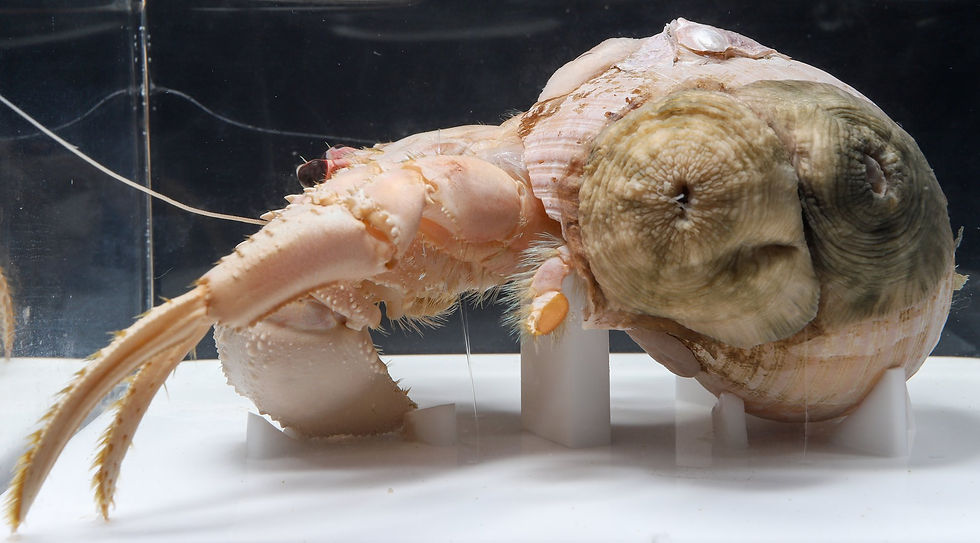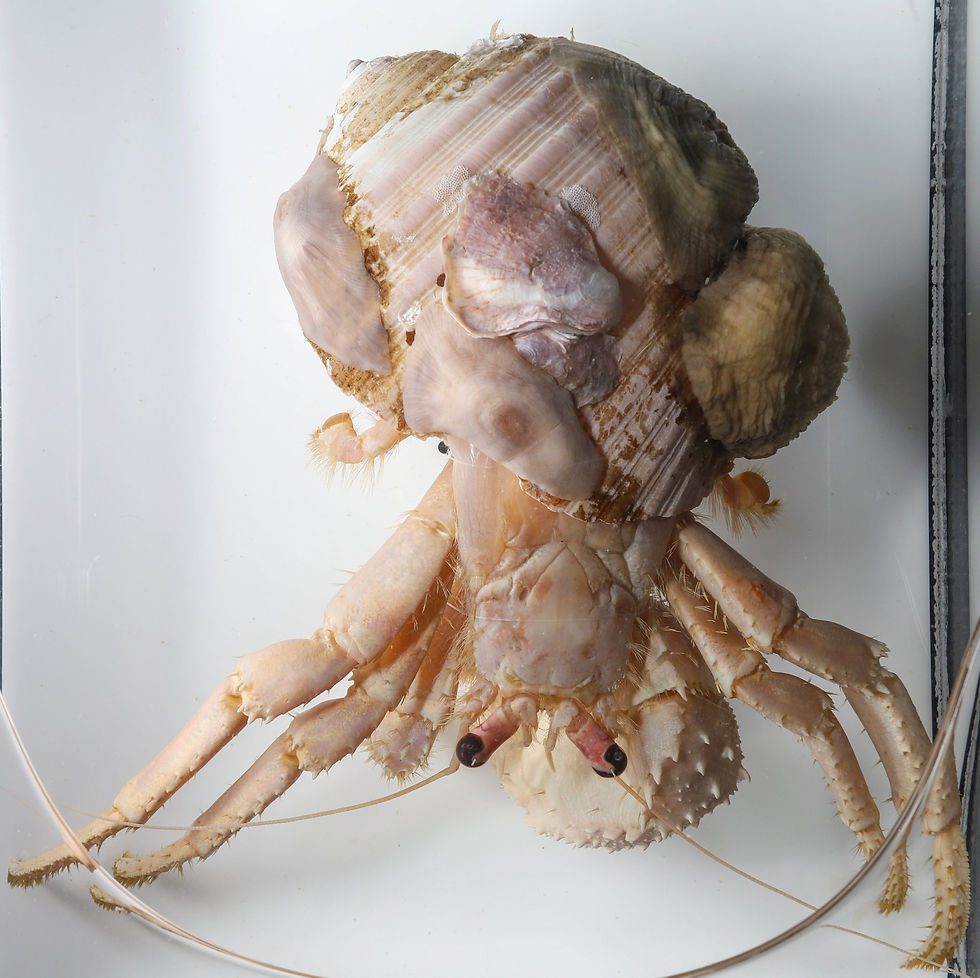We have a specimen of Red Reef Hermit Crab (𝘋𝘢𝘳𝘥𝘢𝘯𝘶𝘴 𝘢𝘳𝘳𝘰𝘴𝘰𝘳 (Herbst, 1796)) in the museum. If you pay attention to the top of its shell, you may notice a growth. What at first may be looking like a tumor-like thing is in fact a Parasitic Anemone (𝘊𝘢𝘭𝘭𝘪𝘢𝘤𝘵𝘪𝘴 𝘱𝘢𝘳𝘢𝘴𝘪𝘵𝘪𝘤𝘢 (Couch, 1842))!

Sea anemones usually attach themselves on sessile substances (e.g. rocks and corals) on the seabed where they would then catch preys with their tentacles that contain venomous nematocysts. Parasitic Anemones prefer to attach themselves on hermit crabs for hitched rides, allowing for the exploration of new foraging areas and better chances to grab food while the hermit crabs move and forage. Meanwhile, the presence of Parasitic Anemones can drive the predators (i.e. octopuses) of the hermit crabs away, making the crabs free from the fear of being attacked and safer to move. What may initially look like a parasitic relationship can then turn into a mutualistic interaction (win-win).

Studies have shown that Parasitic Anemones would coexist with several hermit crab species in this way. It’s considered as a master of building mutualistic relationships!
This specimen was collected by researchers in Mirs Bay in 1986. If you have seen Parasitic Anemones and their mutualistic partners in Hong Kong waters recently, feel free to tell us in the comments!


Comments